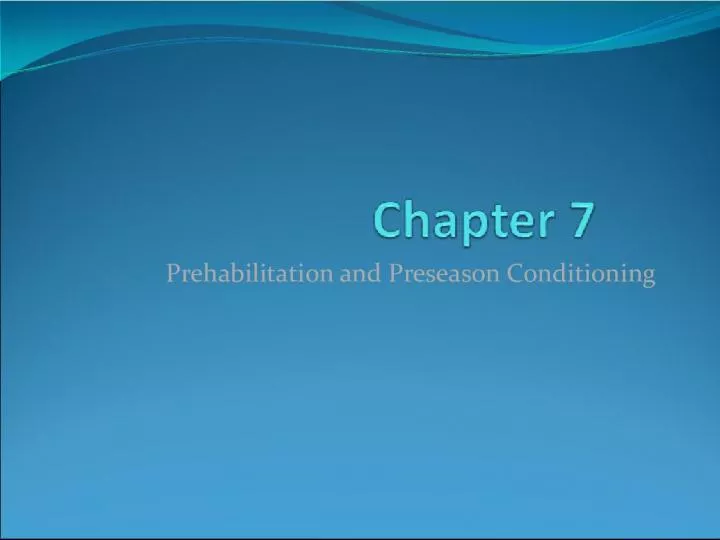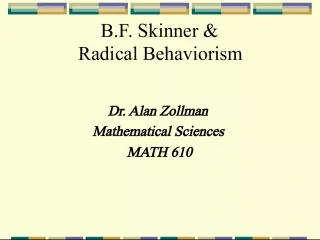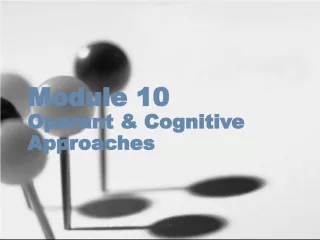Prehabilitation and Preseason Conditioning


Prehabilitation and preseason conditioning are two important processes in sports medicine. Prehabilitation involves preventative measures to decrease the chance of injury before it occurs through a management program. On the other hand
- Uploaded on | 1 Views
-
 polyan
polyan
About Prehabilitation and Preseason Conditioning
PowerPoint presentation about 'Prehabilitation and Preseason Conditioning'. This presentation describes the topic on Prehabilitation and preseason conditioning are two important processes in sports medicine. Prehabilitation involves preventative measures to decrease the chance of injury before it occurs through a management program. On the other hand. The key topics included in this slideshow are . Download this presentation absolutely free.
Presentation Transcript
Slide1Prehabilitation and Preseason Conditioning
Slide2Rehabilitation The process of restoring function through programmed exercise, to enable return to competition This process occurs after an injury has taken place and a diagnoses has been made by a health care professional
Slide3Prehabilitation Trying to prevent injuries before they occur, they occur, through a preventative management program Decreases the chance of injury by addressing areas of concern or deficit identified before participation in a sporting event. A program can be implemented to strengthen and develop these areas, thus reducing the chance of injury during participation Prehabilitation takes place during preseason conditioning. This should begin 6-8 weeks prior to sports participation
Slide4Preseason Conditioning Allows an athlete’s body to gradually adjust to the stresses and demands of their sport Takes place during off-season Not necessarily the same as Prehabilitation, although may take place at the same time and involve some of the same activities
Slide5The pre-season conditioningprogram - Components Type – What kind of exercise or activity? Should be sport specific. Frequency – How often should it be done? Intensity – How hard is it? Duration – How long should the exercise or activity last?
Slide6Strength Training A highly adaptive process whereby the body changes in response in increased training loads. Purpose of strength training is adaptation. The systematic application of exercise stress sufficient to stimulate muscle fatigue, but not so severe that breakdown and injury occur.
Slide7Hypertrophy If a muscle is worked beyond its normal limits, it adapts and becomes larger. The muscle then becomes stronger allowing it to handle the increased demands placed on it.
Slide8Reversibility If demands are then decreased on a muscle, atrophy will occur. The muscle will become weak and waste away.
Slide9Progressive Resistance Exercise Allows the body to adapt to the increased demand placed upon it by training Factors that determine the rate and type of strength gains include: Overload Specificity Reversibility Individual Differences
Slide10Overload Muscles must be overloaded to improve strength. Muscles increase in strength and size when they are forced to contract at tensions close to maximum. If consistent gains are to occur, demands on muscles must be gradually increased at a controlled rate. Ideal number of repetitions for an exercise are between 4-8 and should be done in multiple sets of three or more. Rest period between sets is important and varies per individual
Slide11Specificity Muscles adapt specifically to the nature of the work that is performed. If hypertrophy of leg muscles is desired, leg muscles must be worked. If hypertrophy of the shoulder muscles is desired, shoulder muscles must be worked, etc.
Slide12Individual Differences Different people vary in the rate which they gain strength. Can be attributed to the predominance of Fast and Slow Twitch Muscle Fibers Male vs. Female Genetics – Fiber Composition is pre-determined, but training can improve upon this Level of fitness the individual is in at the time they begin strength training
Slide14How a muscle works Motor unit – when a muscle flexes, a motor unit is activated. This is a motor nerve plus all the muscle fibers it stimulates.
Slide15When muscles contract… Recruitment of different types of motor units take place to carry out the contraction The muscle shortens when it is contracted, then lengthens when it is relaxed.
Slide16Slow Twitch Muscle Fibers Fiber in a motor unit that requires a long time to generate force. Resistant to fatigue Jogging, and most other tasks of human motion
Slide17Fast Twitch Muscle Fibers Fiber in a motor unit that produces quick, forceful contractions. Easily fatigued Sprinting, weightlifting
Slide18Isometric Exercise There is a muscle contraction with movement of a limb Muscles maintain a constant length throughout the contraction Often used in rehab No equipment needed-uses body’s own resistance Low risk of injury Should be avoided by those with high blood pressure or circulation problems
Slide19Dynamic/Isotonic Exercise A muscle is contracted and causes the muscle to contract and shorten. Movement occurs at the joint that the muscle acts on Dumbbells, Barbells, Calisthenics such as push-ups, sit-ups, and chin-ups. Results in increased strength, blood circulation, and endurance
Slide20Manual Resistance Training Form of dynamic exercise accomplished utilizing a training partner Partner assists by adding resistance to the lift as the lifter works the muscles through the full range of motion. Adds enough resistance to allow the lifter to fatigue the muscles Requires minimal equipment Partner can help control technique Training can be done anywhere
Slide21Isokinetic Exercise A type of exercise in which a machine is used to control the speed of contraction within the range of motion Provides muscular overload at a constant, preset speed Generally used in Physical Therapy settings. Machines are very expensive
Slide22Circuit Training The use of 6-10 strength exercises complete one right after another. Short rest period between sets as well as different exercises Usually used with machines Improves strength and endurance
Slide23Stretching and Flexibility Stretching – moving joints beyond their normal range of motion Flexibility – The ability of a joint to move freely throughout its full range of motion Useful for injury prevention and treatment
Slide24Guidelines for Stretching Warm up first. Never stretch a cold muscle! By warming up first, the delivery of oxygen and nutrients are increased thus preparing muscles for strenuous activity. Warming up should not be too tiring, but just enough to begin perspiring. Usually a light jog for 5-7 minutes is sufficient
Slide25Just the Facts Please An active person tends to be more flexible than a non- active person Females tend to be more flexible than males As we get older, we lose flexibility Flexibility is just as important as strength and endurance To achieve flexibility of a joint, the surrounding muscles must be stretched
Slide26Flexibility and Age
Slide27PNF Proprioceptive Neuromuscular Facilitation – involves a combination of contraction and relaxation of the muscles. Proprioceptive – refers to stimuli originating in muscles, tendons, and other internal tissues. Neuromuscular – pertains to muscles and nerves Facilitation – is the enhancement of any natural process
Slide28PNF Cont… Requires an initial isometric contraction against maximum resistance at the end range of motion. Position is held for six seconds followed by relaxtion and passive stretching This process is repeated several times Requires a qualified assistant Allows for greater stretch due to fatigue of muscle fibers during the relax phase PNF Video
Slide29Cardiorespiratory Conditioning An activity that puts an increased demand on the lungs, heart, and other body systems AKA aerobic or endurance training Uses large muscle groups for activities such as walking, jogging, swimming, or cycling.
Slide30Goals of aerobic conditioning Improve performance Train the heart and other muscles to use oxygen more efficiently The more efficient the cardiovascular system, the longer the athlete may exercise, therefore improving overall fitness Increase muscular endurance. (Ability of muscles to sustain high-intensity aerobic exercise)
Slide31Long-term effects Like any muscle, the heart increases in size, thereby increasing pumping volume. Resting heart rate decreases Resting blood pressure decreases Increased lung capactiy – allows for more oxygen transport to muscles Increase in metabolism
Slide32Additional benefits Reduced fatigue Improved self-confidence Improved muscle strength and tone Increased endurance Reduced stress levels Reduced body fat Improved overall physical and mental health
Slide33How do I get started? Check with your physician to make sure there are no limitations to beginning an aerobic exercise program. Talk to your school’s Certified Athletic Trainer Consult with a Certified Personal Trainer Remember! In OK, all personal trainers may not be certified. Look into hiring one who is ACSM certified.

